Arranging a sofa and loveseat in a small living room can be a challenge, but with thoughtful planning, you can create a comfortable and stylish space. “How to Arrange Sofa and Loveseat in Small Living Room” is a guide designed to help you maximize your limited space. By strategically placing your furniture, utilizing light colors, and incorporating multifunctional pieces, you can make your small living room both functional and inviting. Follow these tips to create a cozy, organized, and visually appealing living area that meets all your needs.
1. Maximize Space With Strategic Furniture Placement
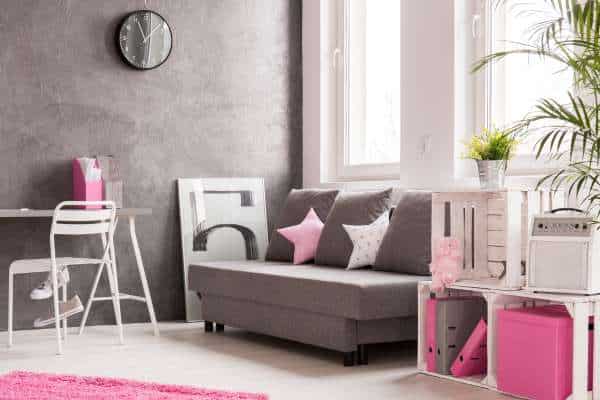
Begin by measuring your room to understand its dimensions and plan the layout accordingly. Position the sofa and loveseat to create a focal point, such as around a fireplace or television. Opt for a layout that allows for easy movement and access, ensuring no pathways are obstructed. Consider placing the loveseat against a wall and the sofa opposite or at an angle to open up the space. Additionally, utilizing multifunctional furniture like ottomans with storage can help reduce clutter.
2. Create Cozy Corners For Comfortable Seating
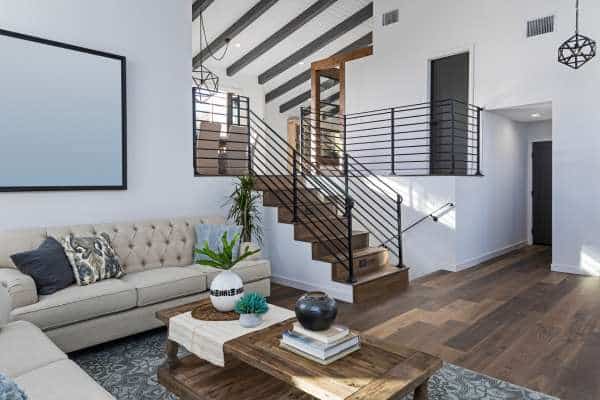
Creating cozy corners for comfortable seating in a small living room can transform the space into a welcoming retreat. Begin by choosing compact furniture that fits well within the room’s dimensions. Arrange the sofa and loveseat to form intimate seating areas, ideally near windows or lighting sources to enhance the ambiance. Incorporate soft textiles like throw blankets and cushions to add warmth and texture. Adding a small side table or a floor lamp can complete the cozy corner, providing both functionality and style.
3. Use Light Colors To Expand Room
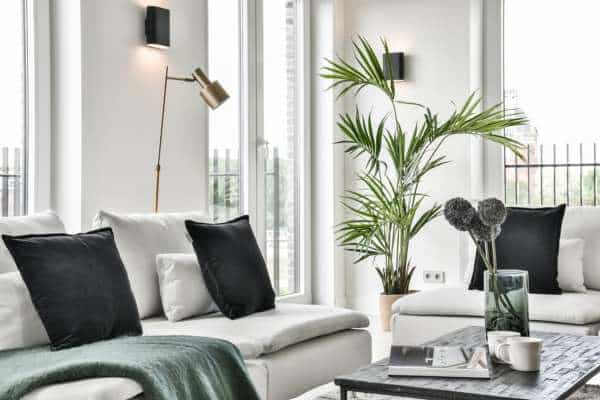
Light hues like whites, pastels, and soft neutrals reflect natural light, creating an airy and spacious atmosphere. When arranging your sofa and loveseat, choose upholstery in light shades to blend seamlessly with the walls, reducing visual clutter. Complement the seating with light-colored rugs, curtains, and accessories to maintain a cohesive look. Additionally, incorporating mirrors can amplify the effect by reflecting light and giving the illusion of more space.
4. Choose Multifunctional Furniture For Small Spaces

Pieces like sofa beds, storage ottomans, and nesting tables serve multiple purposes, saving valuable space. A loveseat with built-in storage or a coffee table that doubles as a work desk can help keep the area organized and clutter-free. This versatility allows you to maximize every square inch of your living room without sacrificing comfort or aesthetics. When selecting these multifunctional items, look for designs that complement your decor, ensuring a cohesive and efficient use of space.
5. Keep Pathways Clear For Easy Movement
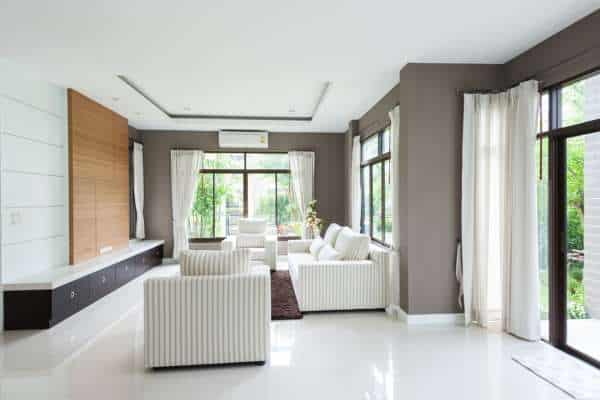
Keeping pathways clear for easy movement is crucial in a small living space to maintain a sense of spaciousness and functionality. When arranging your sofa and loveseat, ensure there is ample space for foot traffic around and between the furniture pieces. Avoid overcrowding the room with unnecessary items, and opt for sleek, streamlined designs that don’t obstruct walkways. Placing the sofa against a wall and the loveseat at an angle or parallel can create an open flow, making it easier to navigate the room. Additionally, consider using wall-mounted shelves instead of bulky cabinets to save floor space. Read, How to Arrange Sectional Sofa in Living Room.
6. Utilize Vertical Space For Added Storage

Utilizing vertical space for added storage is an effective way to maximize functionality in a small living space. Incorporate tall bookshelves, wall-mounted cabinets, and floating shelves to keep the floor area uncluttered while providing ample storage. These vertical storage solutions can house books, decorative items, and essential belongings without taking up precious floor space. When arranging your sofa and loveseat, consider positioning them to leave wall space for these vertical elements. Using vertical space not only helps in organizing the room but also draws the eye upward, creating an illusion of a taller, more spacious living area.
7. Position Furniture For Optimal TV Viewing
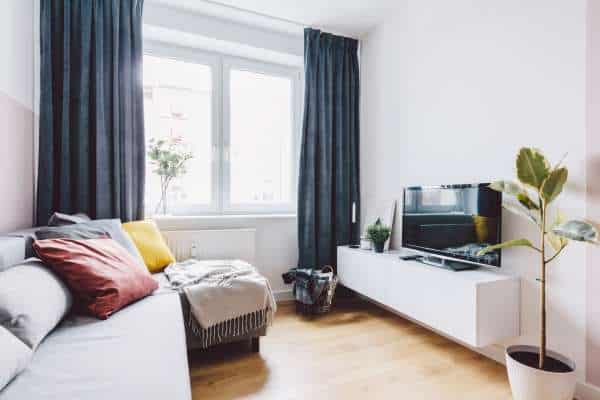
Positioning furniture for optimal TV viewing is essential for creating a comfortable and enjoyable living room experience. Start by identifying the focal point where your TV will be placed. Arrange your sofa and loveseat to face the TV, ensuring that all seating provides a clear, unobstructed view. Consider the distance between the seating and the TV to avoid straining your eyes; typically, the ideal distance is about 1.5 to 2.5 times the diagonal screen size of the TV. To enhance the viewing experience, angle the loveseat slightly towards the TV or use swivel chairs that can be adjusted as needed.
8. Balance Room With Symmetrical Arrangements
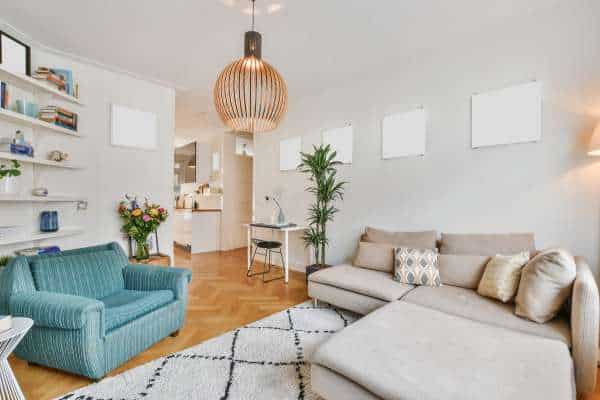
Balancing a room with symmetrical arrangements can significantly enhance the look and feel of a small living space. Start by positioning your sofa and loveseat opposite each other to create a balanced layout. This arrangement promotes a harmonious and inviting atmosphere, ideal for conversation and relaxation. Add matching elements like side tables, lamps, and decorative accessories on both sides to maintain visual symmetry. By using a symmetrical setup, you ensure the room feels orderly and spacious, avoiding cluttered or cramped appearances.
9. Incorporate Mirrors To Reflect Natural Light

Place mirrors opposite windows to capture and reflect daylight throughout the room, making it feel more open and airy. Mirrors can also be strategically positioned above furniture, such as behind the sofa or loveseat, to create a sense of depth and dimension. Choosing decorative mirrors that complement your decor can add both style and functionality. By effectively using mirrors, you can maximize natural light, enhance the overall ambiance, and make your small living space appear larger and more inviting.
10. Anchor Seating With A Central Rug
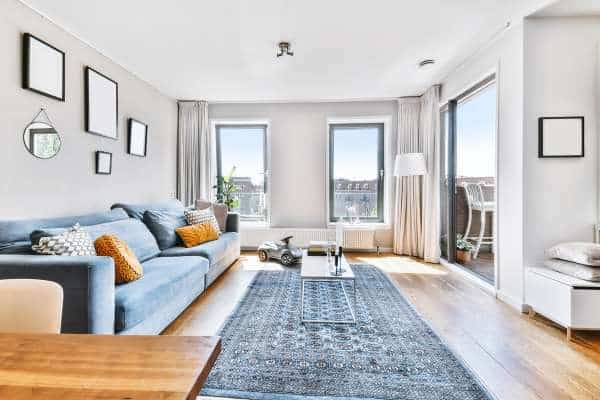
Anchoring seating with a central rug is an excellent way to define and enhance the space in a small living room. A well-chosen rug can tie together the sofa and loveseat, creating a cohesive and inviting seating area. Select a rug that complements your room’s color scheme and is proportionate to the size of the space. Placing the front legs of the sofa and loveseat on the rug helps to anchor the furniture, making the room feel more connected and organized. Additionally, a central rug adds warmth and texture, contributing to a cozy atmosphere.
11. Opt For Space-Saving, Slim-Profile Pieces
Opting for space-saving, slim-profile pieces is essential for maximizing functionality in a small living room. Choose furniture with sleek designs and narrow frames, such as a streamlined sofa and loveseat, to make the most of your available space. Slim-profile pieces take up less room without sacrificing comfort, allowing for easier movement and a less cluttered appearance. Look for multifunctional furniture, like nesting tables or wall-mounted shelves, to add storage and surface areas without overwhelming the space. By selecting space-saving, slim-profile pieces, you can create a stylish, functional living room that feels open and inviting despite its smaller size.
12. Arrange Furniture To Encourage Conversation Flow

Arranging furniture to encourage conversation flow is key to creating an inviting and functional small living room. Position the sofa and loveseat to face each other or at a slight angle, forming a natural conversation area. Ensure there is ample space between the seating to allow for easy interaction without feeling cramped. Adding a central coffee table or ottoman can further facilitate the conversation by providing a shared surface. Arrange additional seating, such as accent chairs or stools, in a semi-circle to promote an inclusive and cozy atmosphere.
13. Blend Different Textures For Visual Interest
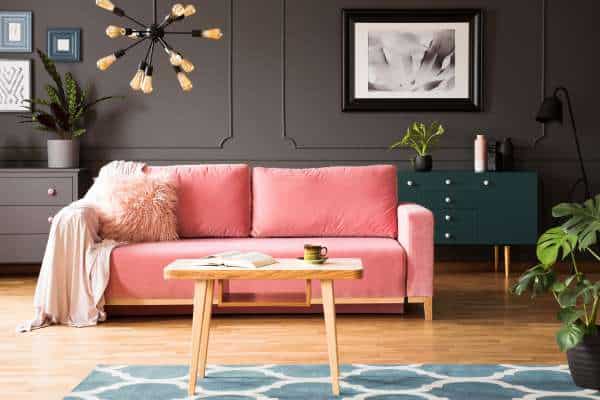
Blending different textures for visual interest is a great way to add depth and personality to a small living room. Combine materials such as a soft fabric sofa with a leather loveseat, or pair a plush rug with a sleek glass coffee table. This mix of textures creates a layered, rich look that draws the eye and adds dimension to the space. Incorporate textured throw pillows, knitted blankets, and woven baskets to enhance the tactile appeal.
14. Place Loveseat Against Wall, Sofa Floating
Placing the loveseat against the wall while keeping the sofa floating is an effective strategy for optimizing space and creating a balanced layout in a small living space. Positioning the loveseat against the wall frees up valuable floor space, making the room feel more open and less cluttered. The floating sofa, placed centrally or at an angle, helps to define the seating area without obstructing pathways. This arrangement also allows for more flexible furniture placement and better traffic flow. By using this layout, you can create a harmonious and functional living room that maximizes space and enhances comfort and style.
15. Add Decorative Pillows For Style, Comfort

Placing the loveseat against the wall while keeping the sofa floating is an effective strategy for optimizing space and creating a balanced layout in a small living room. Positioning the loveseat against the wall frees up valuable floor space, making the room feel more open and less cluttered. The floating sofa, placed centrally or at an angle, helps to define the seating area without obstructing pathways. This arrangement also allows for more flexible furniture placement and better traffic flow.
Conclusion
Arranging a sofa and loveseat in a small living room requires strategic planning and creativity. By maximizing space with thoughtful furniture placement, creating cozy corners, using light colors, and incorporating multifunctional pieces, you can make the most of your compact area. Keeping pathways clear, utilizing vertical space, and positioning furniture for optimal use enhances both the functionality and aesthetic appeal of your room. With these tips, your small living space can become a stylish, comfortable, and inviting space for you and your guests.

